Photos: Ross Ruiz, Chelsea Ruiz, Brent Lawson
Catching up with Kustom Kulture historian Ross Ruiz
Let’s face it, you don’t know anything about Hot Rods, Lowriders, or Kustom Kulture. It’s not your fault, it's your friend’s fault—they got you into cars because of video games like Gran Turismo, Need for Speed Underground, or Automodelista. It’s no wonder why iconic JDM sports cars like the Nissan 240SX, Honda NSX, Mazda RX-7, and Toyota Supra have been skyrocketing in price in recent years. It’s because we remember playing these cars, dreaming about them, and allowing them to fuel our car enthusiasm. We didn’t just see these cars in video games, but in movies like the Fast and the Furious franchise or even in the animated Initial D series I.
Perhaps the reason why we don’t see a similar enthusiasm for early Kustom Kulture within the same crowd is simply because of the lack of coverage. It has taken a backseat to popularized E30 Tik Tok videos and drift missiles staged in music videos. Ross Ruiz, however, is one of the very few documentarians with a social media presence that has dedicated his life to researching and unarchiving the early aughts of the Southern Californian texture of 1940s-1960s custom car culture. It was by chance that Nolan and I ran into him at the Grand National Roadster Show last month.
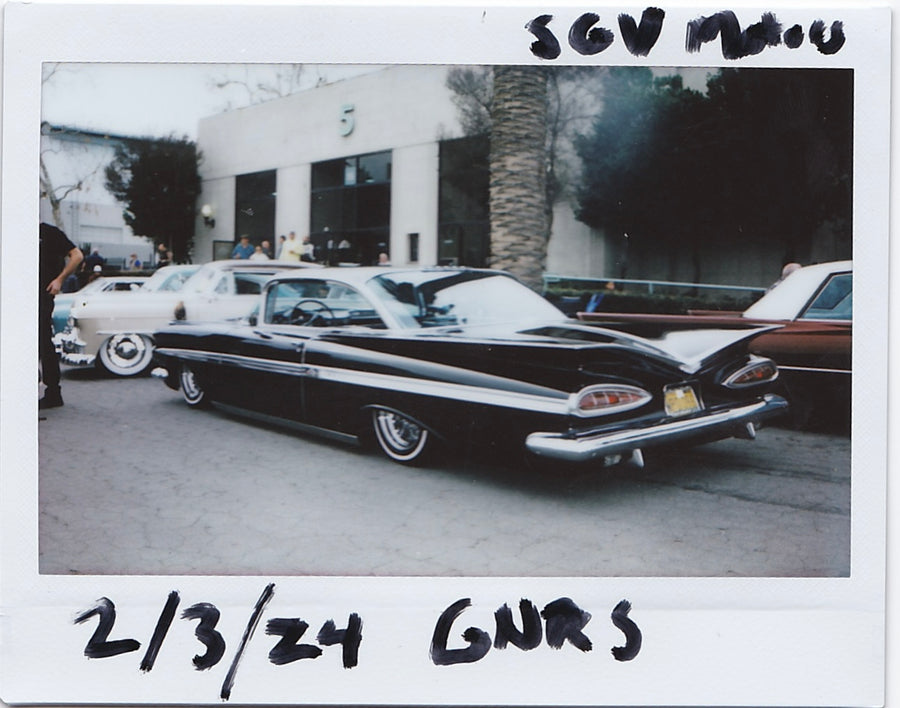

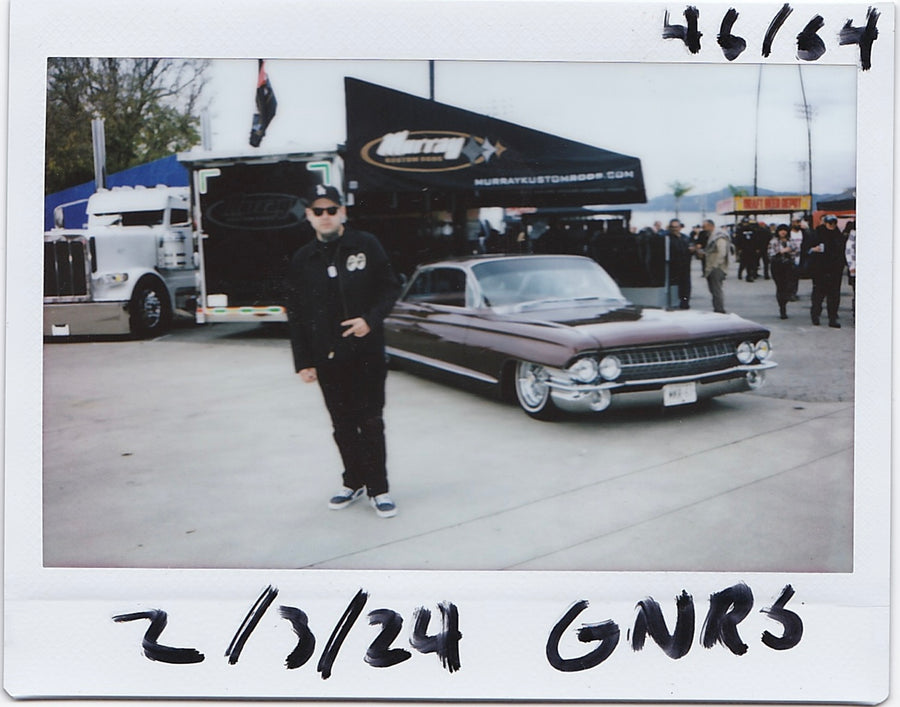
Caption left to right: SGV Motors’ ‘59 Impala (old school lowrider style) / Lee Pratt’s mid-50’s style ‘32 Coupe / Ross Stands in front of his favorite style of custom car (1961 Cadillac kustom built by Murray Kustom Rods)
As you guys know, Nolan has this 1952 Chrysler Imperial. He has the oldest car in the Donut lot and it's been sitting a little longer than expected—and then some. Inspired to get this car back on the road, we decided to go to one of the largest pre 70s car shows to really get a sense for how people were achieving their aesthetic and performance goals. After about 20 minutes of staring at a beautiful bagged ‘39 Cadillac, I noticed a friend of mine off in the corner, Ross Ruiz, about to snap some polaroids of a bagged blue Chevy. Ross (32), invited Donut into his studio where we snapped photos of our upcoming Dice collection and learned about the history of fuzzy dice through a series of Motorama books, Rod & Custom magazines, and scanned image printouts he had laid out on his counter. We wanted to collaborate with Ross on a joint photo series to contextualize our Dice collection with the guy who knows everything about it. Ross’ work is a quilt of automotive storytelling that is adorned by big names like Bill Hines, Tom Kelly, Gene Witfield, Ron Aguirre, and Larry Watso —all of whom he has made connections with in some type of way. He was the guy to help find and locate the first car ever to have hydraulics, a then white ‘54 Ford Kustom that was built by James “Jim” Logue here in Los Angeles. He found the first Impala with hydraulics, a blue ‘59 with teardrop shaped rear lamps built by Bill Hines and commissioned by Japanese American owner, Tats Gotanda. Donut has talked about lowrider history before on Past Gas, but Ross describes that both of these aforementioned vehicles predated the modern lowrider that we know and love today. Before Dayton wheels became the wheel of choice for modern lowriders, a 1954 Buick Skylark wheel would be applied as a sort of F-U to the ever so popular sombreros and wheel covers that adorned most cars of the late 50s.
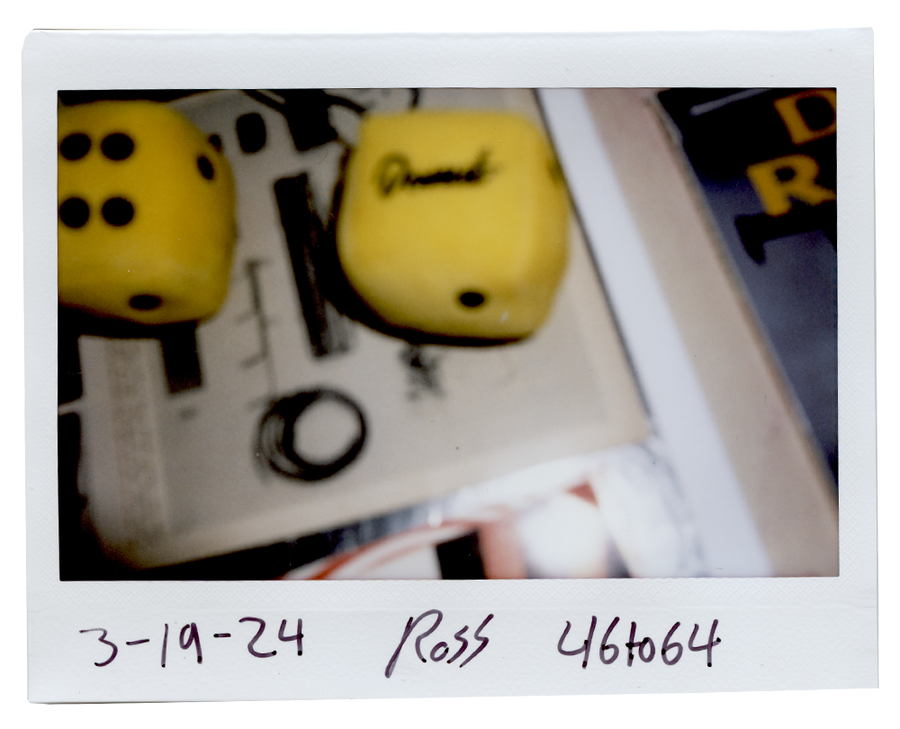
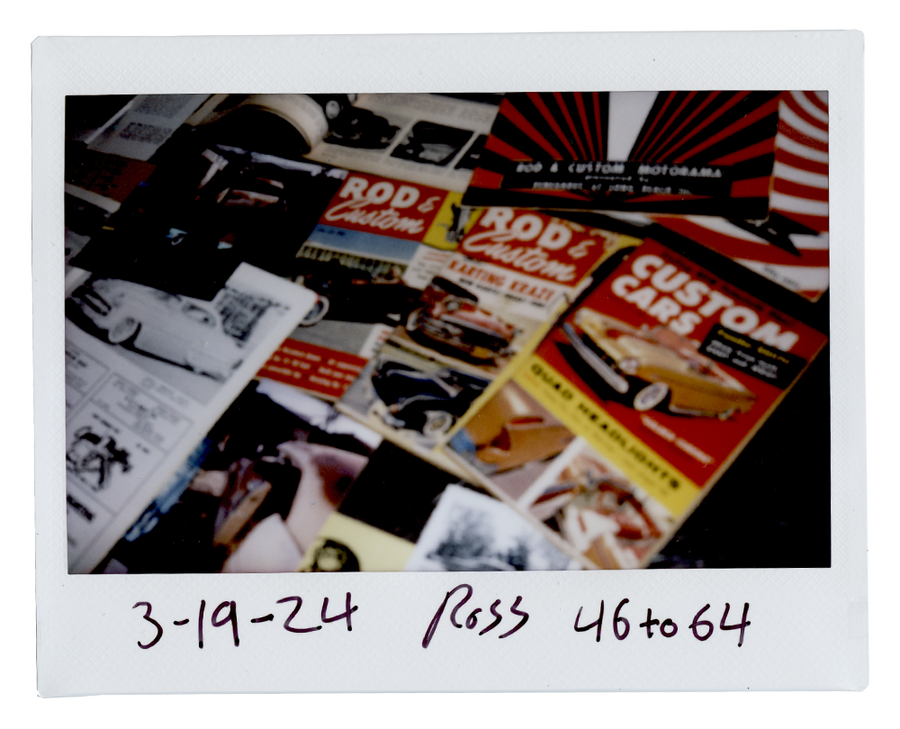

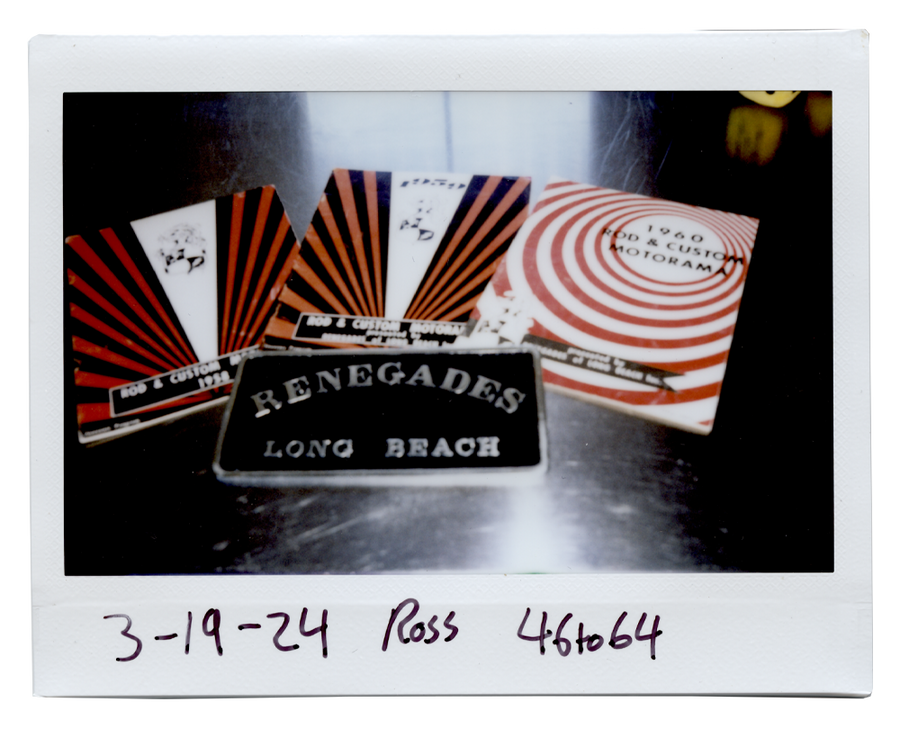

Caption: Donut Fuzzy Dice/ Long Beach C.C. Renegades metal plaque / Ross’ collection of vintage hot rod magazines / Ross’ collaged kustoms wall in his bedroom / Chelsea Ruiz wears Donut Dice Tee.
When we look at the history of hot rod and Kustom Kulture through photographs and memorabilia, it appears to be not as culturally dynamic as modern JDM or Euro car culture. However, Ross has been recently running pinstriper, Tom Kelly’s Instagram page, to which he was able to find a group of African American hot rodders through a photograph a user provided. Slowly, Ross is starting to uncover a forgotten history of hot rodding culture that was actually more dynamic, and culturally relevant than we could ever uncover. With lost photographs and the passing of people who have the stories, Ross is doing some of the most important work that we hope will usher in a new generation of enthusiasts to preserve and maintain this history of Kustom Kulture and lowrider history.
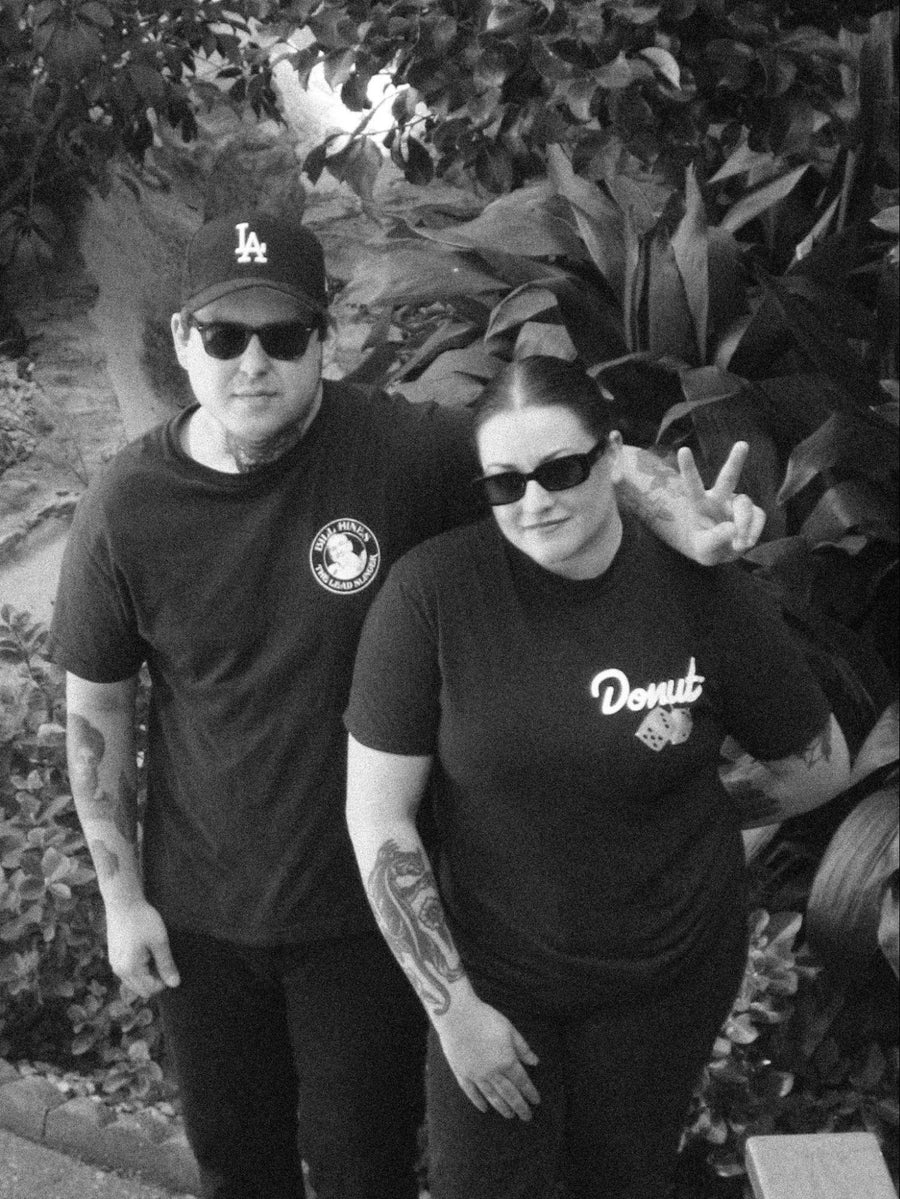
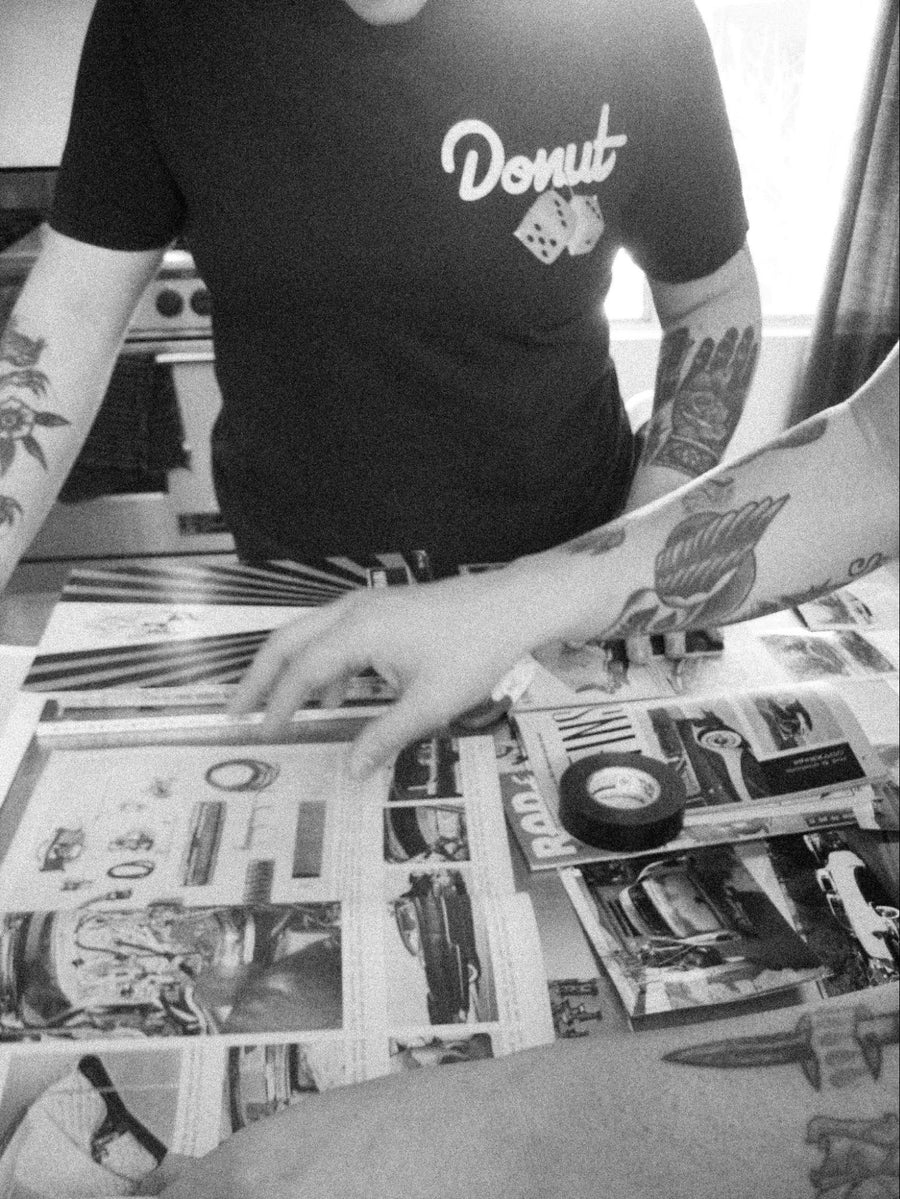
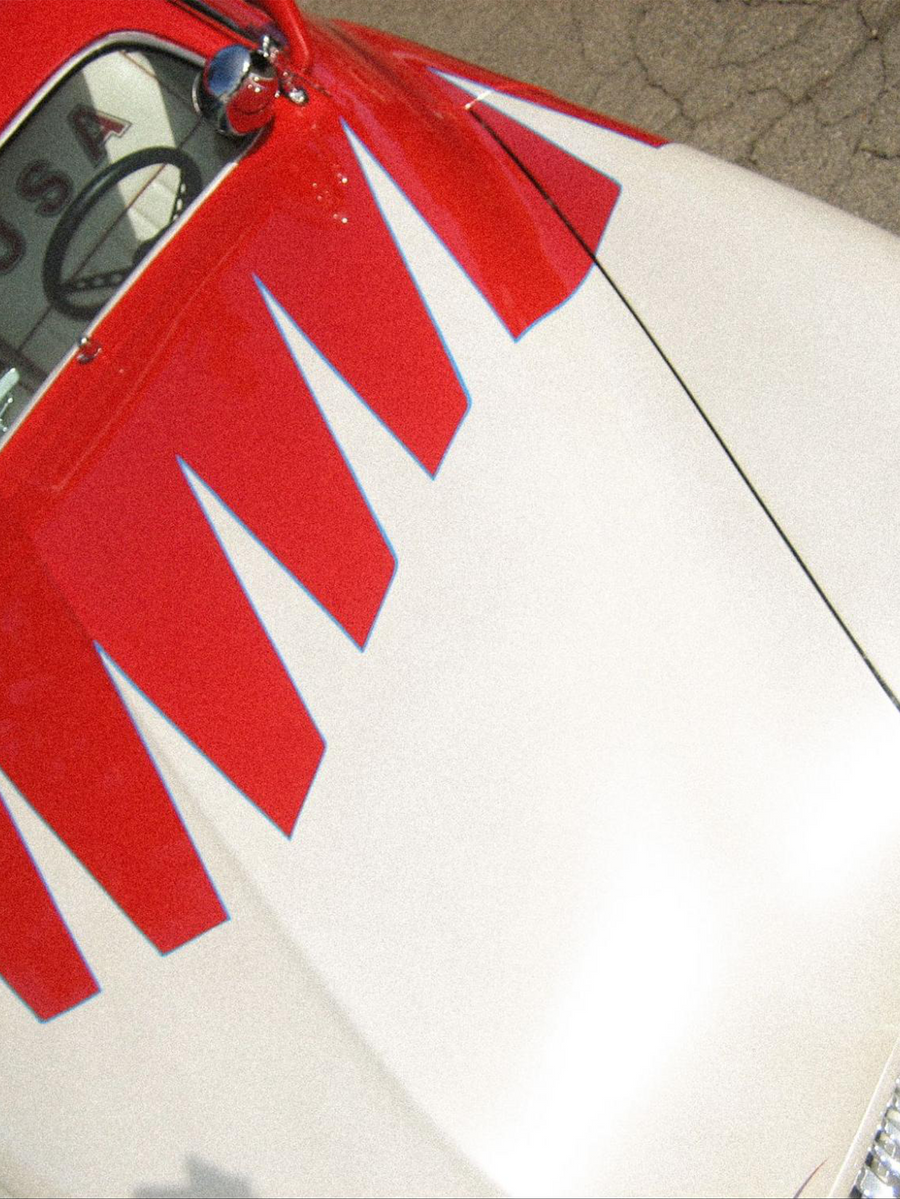
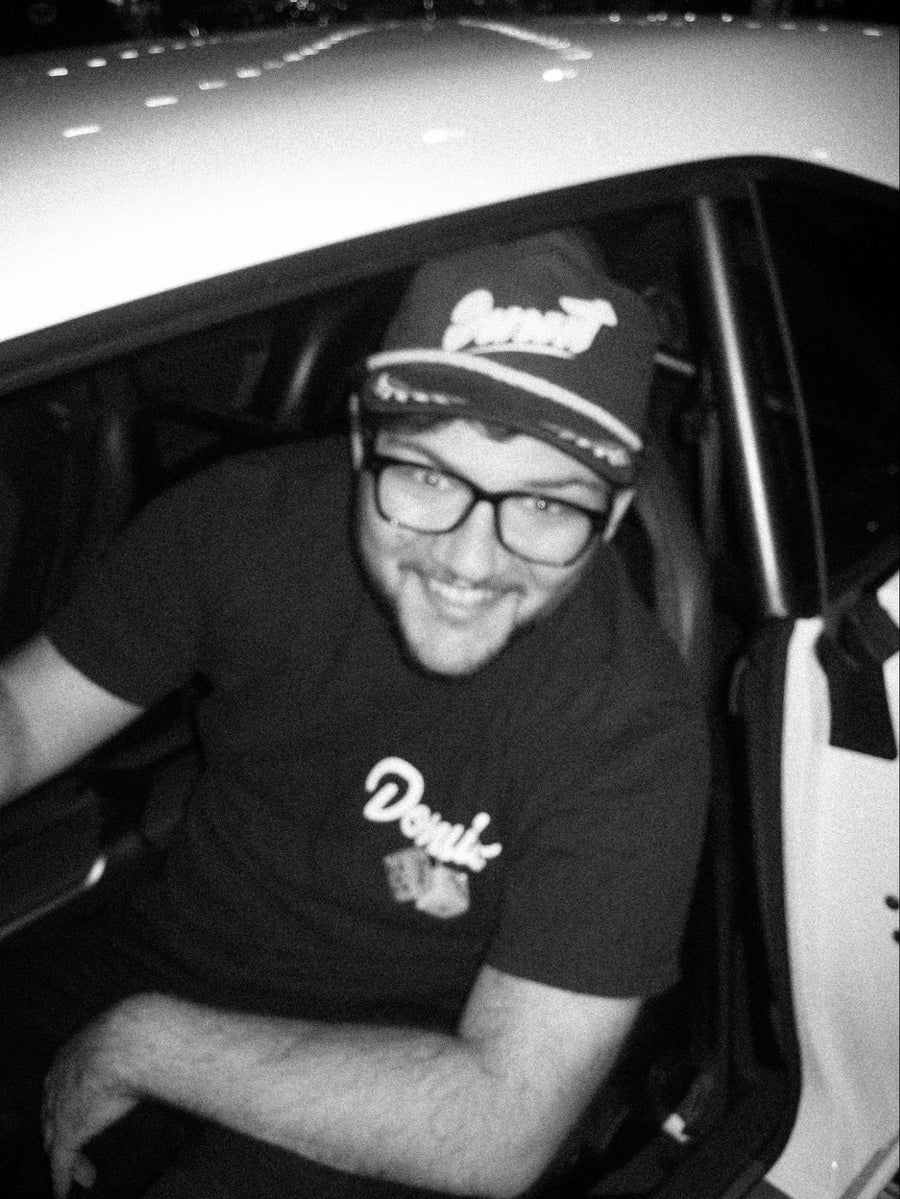
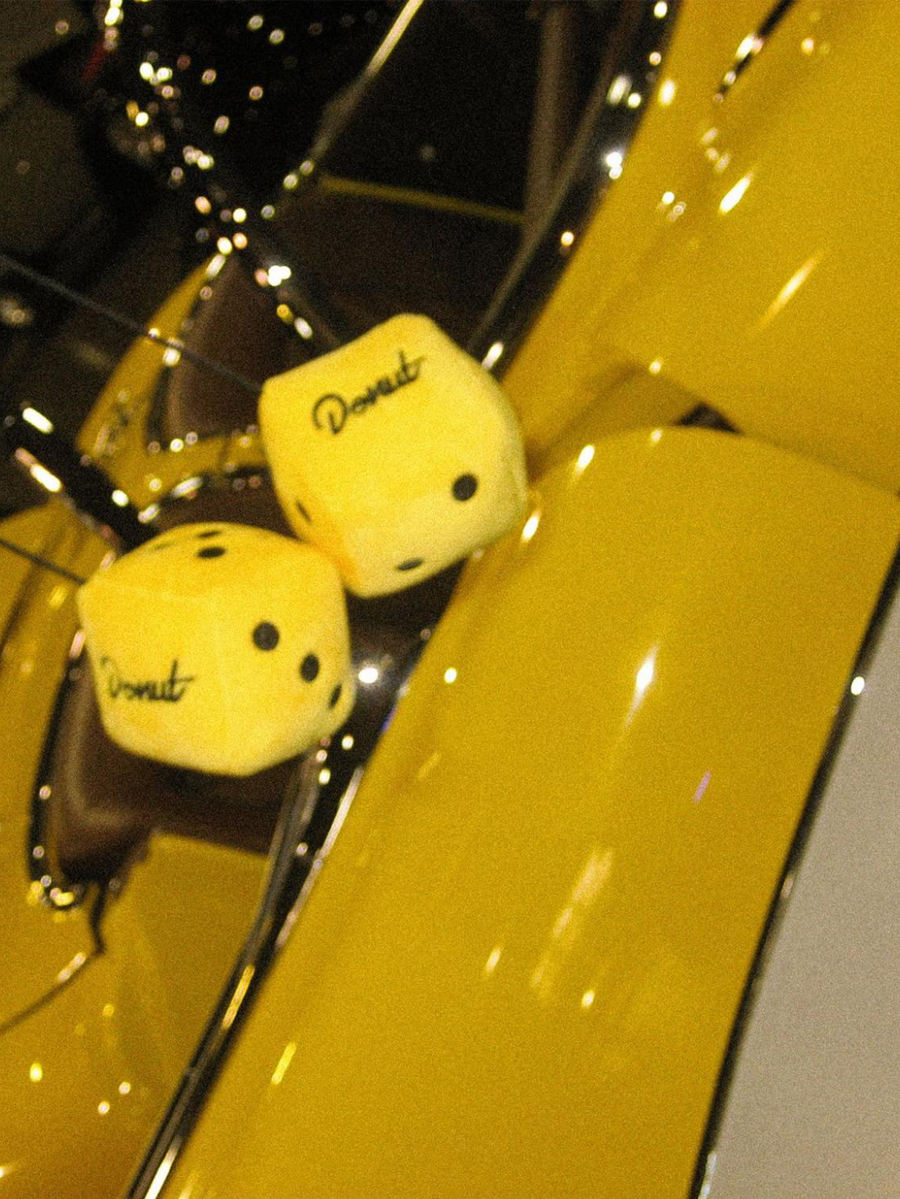

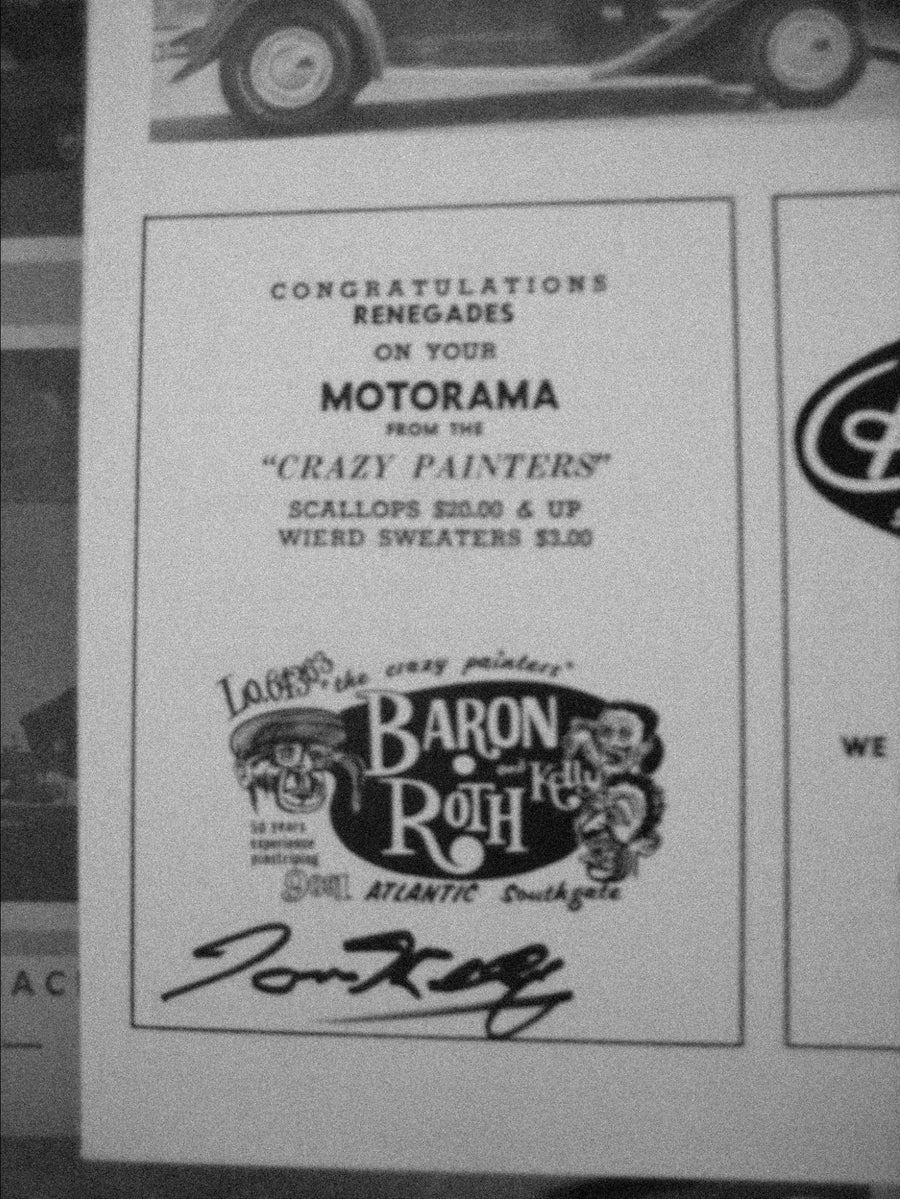
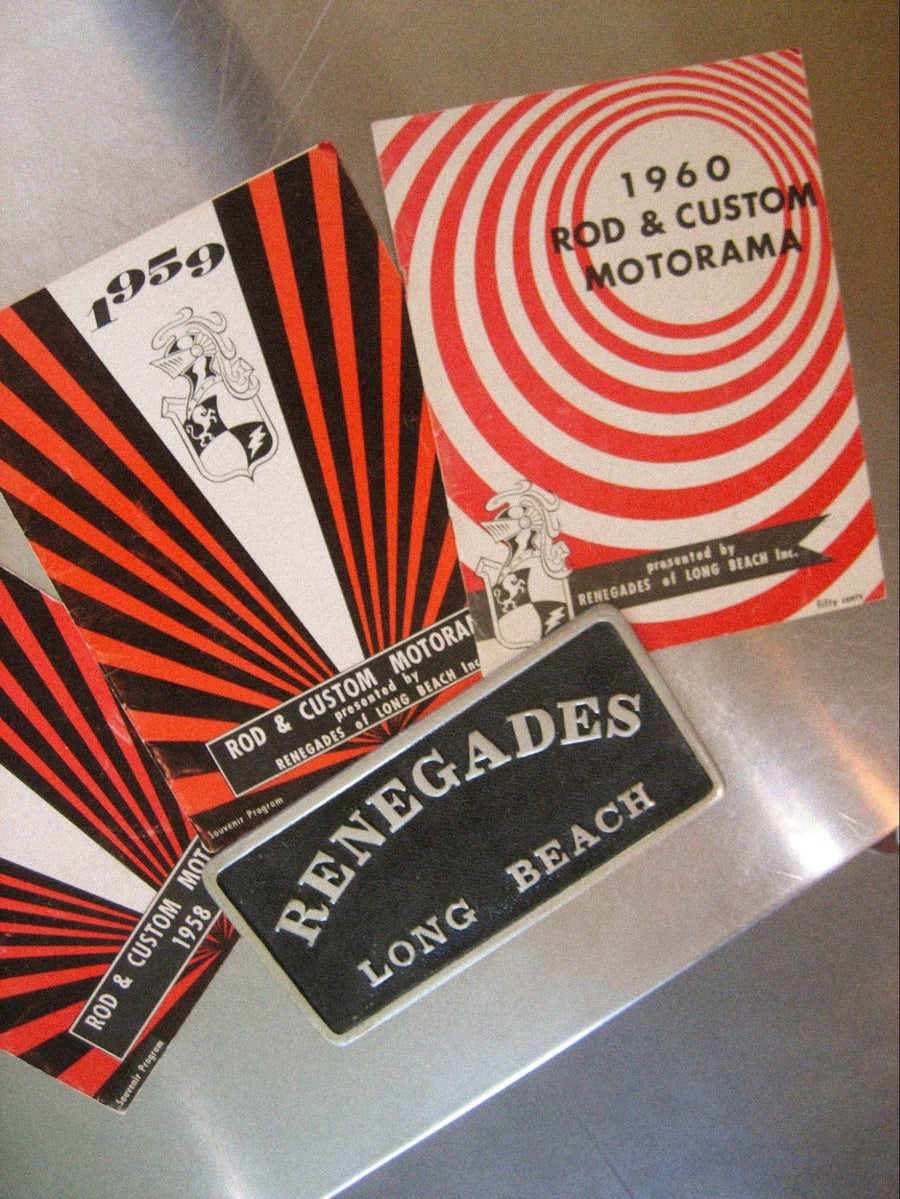
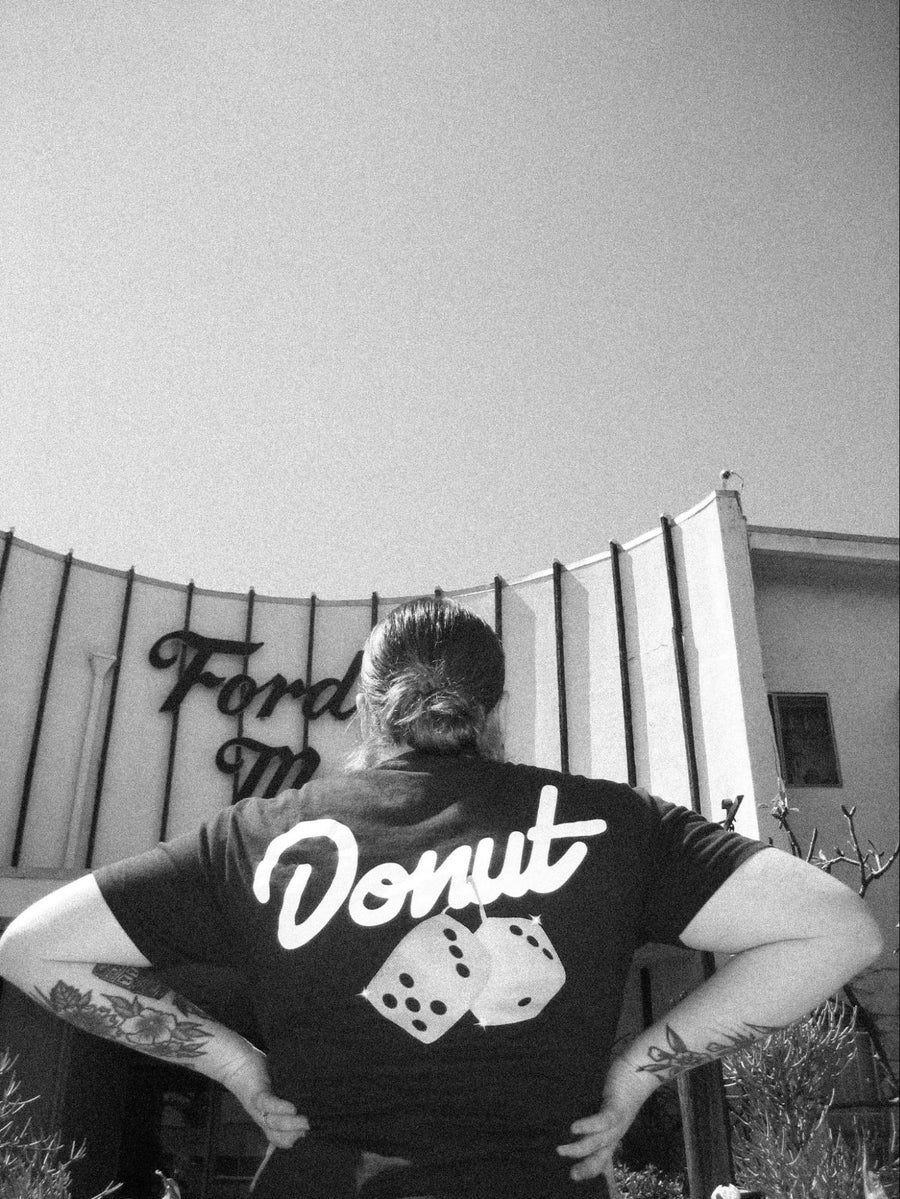
According to Ross, fuzzy dice were first seen in cars through the Long Beach Renegades car club. They were hand-made and adorned with long hair-like fibers, usually dyed and embellished with crystal beads to act as numbers for the die. To finish off the pair, a name was inscribed in place of the “1”. Our T-shirt pays tribute to similar history with airbrush-like shimmer effects that pay homage to artists like Tom Kelly who, to this day, is still airbrushing t- shirts. You thought Ed Roth and Von Dutch were the only ones doing that? Well you’re wrong AND you can still get some original artwork by their real life friend Tom who resides in Orange County.
Now, go tell your friends to pick up a 48 Ford or a 51 mercury—we have a feeling we haven’t quite seen the end of the Kustoms scene, and while you’re at it, keep an eye our for our Dice collection dropping on Monday.
